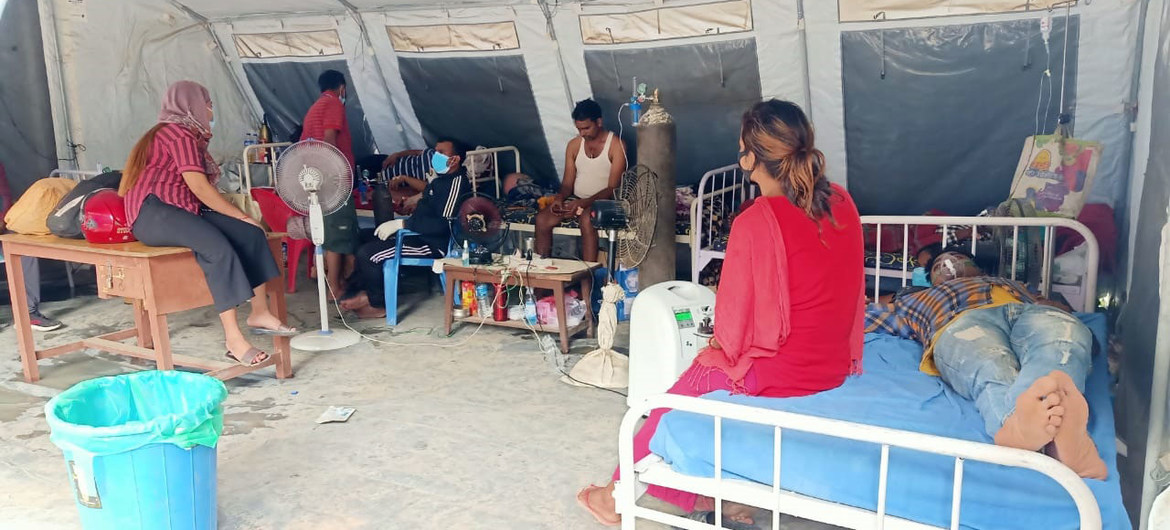Bright futures begin lead free
The twelfth International Lead Poisoning Prevention Week (ILPPW) will take place from 20-26 October 2024
The focus of this year’s campaign “Bright Futures begin Lead Free” reminds governments, civil society organizations, health partners, industry and others of the unacceptable risks of lead exposure and the need for action to protect children’s health. The campaign builds on the success in outlawing the use of lead in petrol and the progress achieved by many countries in establishing laws that limit the use of lead in paint, particularly those paints to which children are exposed in their homes, schools and playgrounds.
The issue
Lead is a well-recognized toxicant that has wide-ranging health impacts, in particular affecting the neurological, cardiovascular, renal, gastrointestinal and haematological systems. Young children are particularly vulnerable as they have unique pathways that can lead to higher exposures than adults. In addition, lead can lead to irreversible damage to the developing brain that may result in health outcomes that last a lifetime, such as reduced intellectual ability. The Institute for Health Metrics Evaluation’s (IHME) latest data estimates that more than 1.5 million deaths globally were attributed to lead exposure in 2021, primarily due to cardiovascular effects. Additionally, lead exposure was estimated to account for more than 33 million years lost to disability (disability-adjusted life years, or DALYs) worldwide in 2021.
Despite widespread recognition of the harmful effects of lead and actions in many countries, exposure to lead, particularly during childhood, remains a key concern for health care providers and public health officials worldwide.
Important sources of lead exposure include environmental contamination from mining, smelting, manufacturing and recycling activities, and the use of lead in a wide-range of consumer products. The majority of global lead consumption is used in the manufacture of lead-acid batteries for motor vehicles. Other products containing lead include pigments, paints, solder, stained glass, lead crystal glassware, ammunition, ceramic glazes, jewellery, toys, some common electrical and electronic items, some cosmetics such as kohl and sindoor, and traditional medicines used in countries such as India, Mexico and Viet Nam. Drinking water delivered through lead pipes, pipes joined with lead solder or from water system parts may contain lead.
The campaign
International Lead Poisoning Prevention Week (ILPPW) takes place every year during the third week of October. In 2024, ILPPW celebrates 12 years of concerted action to eliminate lead paint.
The aims of ILPPW are to:
- raise awareness about the health effects of lead exposure;
- highlight the efforts of countries and partners to prevent lead exposure, particularly in children; and
- urge the completion of action to eliminate lead paint through regulatory action at country level.
Governments, civil society organizations, health partners and others are encouraged to organize campaigns during ILPPW. A range of materials to support campaign activities are made available through the campaign website. We invite campaign organizers to register their activities on WHO’s webpage to spread awareness of events happening across different countries, cities and other regions.
Policy background
WHO identifies lead as one of 10 chemicals of major public health concern requiring action by Member States to protect the health of workers, children and women of child-bearing age. The global elimination of lead in petrol for road vehicles in 2021 and reductions in the use of lead in paint, plumbing and solder have resulted in a substantial decrease in population-level mean blood lead concentrations. However, significant sources of exposure remain, particularly in low- and middle income countries.
Further efforts are required to continue reducing the use and release of lead, and decreasing environmental and occupational exposures, particularly in children and women of child-bearing age. Interventions include eliminating non-essential uses of lead such as in paint, ensuring the safe recycling of lead-containing waste, and educating the public about the importance of safe disposal and recycling of lead-acid batteries and electrical and electronic equipment. Measurement of blood lead levels in children, women of child-bearing age and workers can indicate the need for clinical intervention (see Guideline for clinical management of exposure to lead).
The Global Alliance to Eliminate Lead Paint (the Alliance) was established in 2011 under the joint leadership of the United Nations Environment Programme (UNEP) and WHO. The primary goal of the Alliance is to promote the global phase-out of lead paint through the establishment of appropriate legally-binding measures to phase-out the manufacture, import, export, distribution, sale and use of lead paints in every country.
All Member States are encouraged to phase-out the use of lead paint as a key national action under the WHO Chemicals Road map .
The elimination of lead paint will contribute to the achievement of the following Sustainable Development Goal targets:
- 3.9: by 2030 substantially reduce the number of deaths and illnesses from hazardous chemicals and air, water, and soil pollution and contamination;
- 12.4: by 2020, achieve the environmentally sound management of chemicals and all wastes throughout their life cycle, in accordance with agreed international frameworks, and significantly reduce their release to air, water and soil in order to minimize their adverse impacts on human health and the environment.












